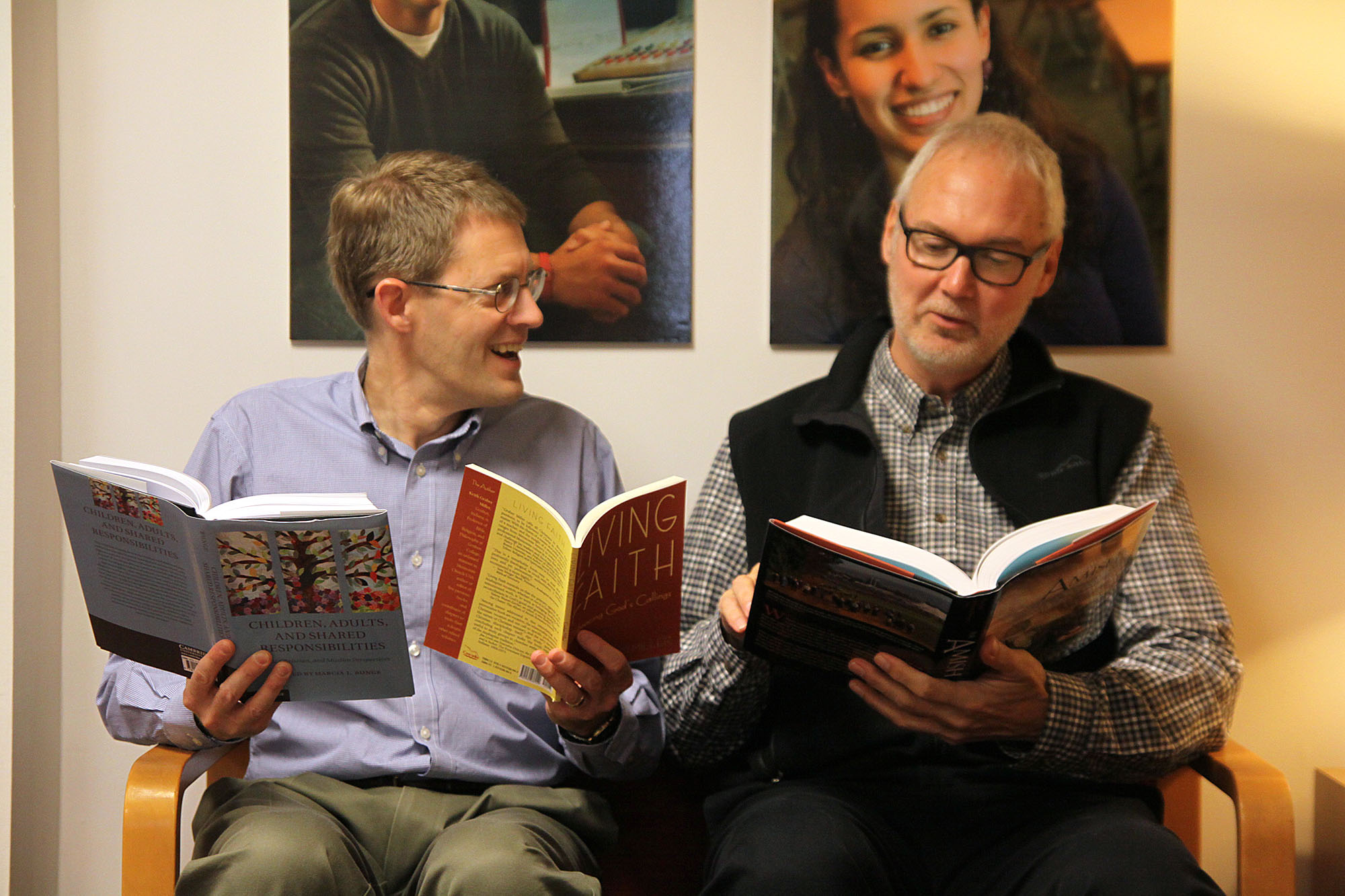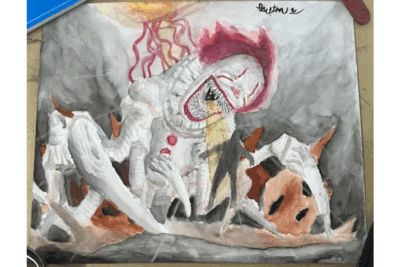The last two years have been big ones for Goshen College-based publications. GC faculty members Steve Nolt, Duane Stoltzfus, Bob Yoder and Keith Graber-Miller have written or co-written books on Mennonite/Anabaptist history. Yoder, Nolt and Stoltzfus published theirs this year, while Graber-Miller published his in 2012.
“The Amish and Mennonites are becoming more interesting to the public,” said Nolt.With a growing audience also comes a growth in the surrounding published work.
The Amish is co-written by Steve Nolt, Donald B. Kraybill, professor at Elizabethtown College and Karen M. Johnson-Weiner, linguist and professor at New York State University. The book appeared on shelves June 1.
The Amish was written over eight years through collaboration between the three authors who each wrote different chapters and edited each other’s work.
“It was both a challenge and a joy to write together,” said Nolt, “three different people in three different states.”
The finished product is a “comprehensive study of Amish society and culture,” said Nolt. It covers a large variety of themes in the Amish community such as economics, European origins, American history, education and government.
“From 2011 to 2013, we have been very focused on getting it finished,” said Nolt. The finished book can now be found in bookstores and online as a part of PBS’s American Experience series.
Duane Stoltzfus’s book, Pacifists in Chains: The Persecution of Hutterites during the Great War, follows the story of four Hutterite conscientious objectors, Joseph Hofer, Michael Hofer, David Hofer and Jacob Wipf, who applied to be conscientious objectors during World War I.
The Hutterites, a branch of Anabaptist tradition, believe strongly in pacifism and Jesus’ word. The four Hutterites not only refused to fight in the war but also refused to take part in any part of the military. For this, they were court marshaled, sentenced to 20 years of physical labor and left in Alcatraz Prison. The two youngest Hutterites died while serving their time.
“It’s a very gripping account of faithfulness, their commitment to God, and to the Hutterite community. In Mennonite history books, this story has generally only been a page or two,” said Stoltzfus. “I wanted to give it a full length account.”
Stoltzfus flew out to Montana to visit the Hofer brothers’ family, one of his main sources, and read a series of letters written by the Hofer brothers while they were in prison.
“They were a very gracious family. I’m grateful for the chance to write this great story,” said Stoltzfus. “It feels like a sacred trust.”
Stoltzfus will hold the opening release and book signing at Better World Books on First Friday, December 6 at 6 p.m.
Released a few days earlier than Stoltzfus’ book was Bob Yoder’s A History of Mennonite Youth Ministry, 1885-2005. Yoder is the editor of the book as well as the author of one of its chapters. Yoder described his book as a “comprehensive history” of Mennonite youth ministry.
Yoder felt called to start this book project after studying youth ministry’s limited history during his doctoral program.
“Not many people stay in youth ministry for long,” said Yoder. “We need a written history to remember what’s been done because people move on, and ideas are lost.”
After Yoder’s beginning overview chapter, they are written by a variety of contributors from around the U.S. and Canada. The writers include past GC Maple Scholars Jonny Gerig Meyer, Josh Hertzler, Matt Harms and Anna Showalter, all history majors.
“It’s really fun to see students get published,” said Yoder, “so I decided that’s what I wanted early on.”
Yoder joked that the hardest part of the eight-year process was getting the Institute of Mennonite Studies to finally put the book in print, “It will feel good to have that printed book in my hand.”
Last fall, just before he left for leading Cambodia SST, Keith Graber Miller’s book Living Faith: Embracing God’s Callings (Cascadia Publishing House, 2012) was released. The book was the culmination of a project on researching Anabaptist/Mennonite perspectives on vocation and calling, initially funded by a Lilly Endowment grant.
Graber Miller said he wrote the text with both college students and older readers in mind, hoping to prompt readers across the life spectrum to reflect on meaning, decisions, and commitments. The book is designed to be used as curriculum in churches, colleges, and seminaries, with study questions at the end of each chapter.
Each of the GC professors said they had a great time writing and editing their respective books.
Said Stoltzfus,“When you can combine teaching in the classroom and uncovering a good story in all its rich detail, it’s just a wonderful experience.”



